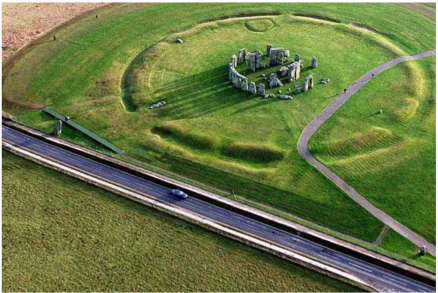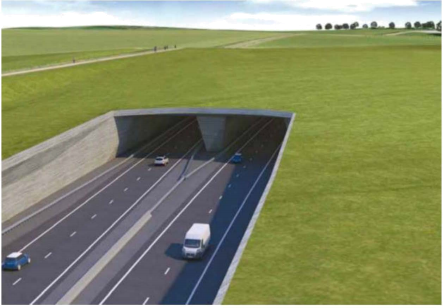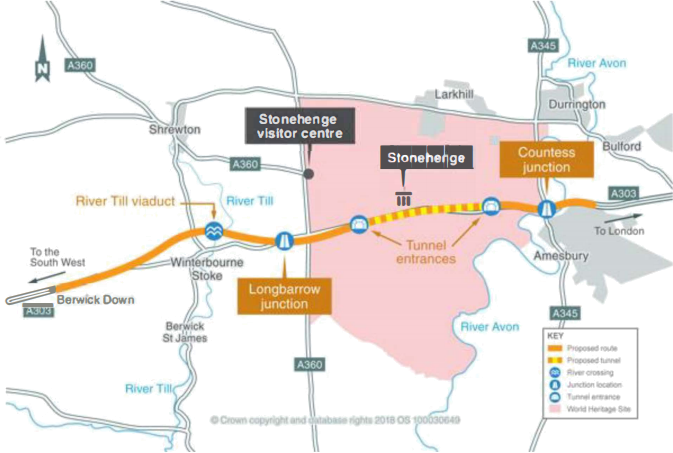关键词 > BPLN0025
BPLN0025 Business Cases for Infrastructure 2019
发布时间:2024-05-14
Hello, dear friend, you can consult us at any time if you have any questions, add WeChat: daixieit
MODULE CODE: BPLN0025
ASSESSMENT PATTERN: BPLN0025A7PA
MODULE NAME: Business Cases for Infrastructure
LEVEL: Postgraduate
DATE: 02 May 2019
TIME: 14:30
TIME ALLOWED: 2 hrs 30 mins
BPLN0025: Business Cases for Infrastructure
Time allowed: 2.5 hours (150 minutes)
• Answer FOUR questions from Part A and ALL of Part B.
• Part A attracts 60% of the overall marks, while Part B attracts 40% of the overall mark.
• Use illustrations and include diagrams in your answers where they assist in providing explanation.
PART A (60% of marks)
• Answer FOUR questions from the following seven
• Each question carries equal weighting (15% each)
Question 1
Outline the structure and purpose of the HM Treasury 5 Case Model and critically discuss its suitability for the development of business cases for major infrastructure projects, which are often highly politicised.
Question 2
Define what is meant by the Discount Rate. Critically discuss the typical discount rates used by HM Treasury, and illustrate the impacts of varying the discount rate on the output of a Cost Benefit Analysis for a major infrastructure project with a design life of 50 years.
Question 3
Outline the key differences between the appraisal, monitoring and evaluation of infrastructure projects. Discuss which of these three procedures is least used in practice and why this is problematic. Make a suggestion for increasing its usage referring to a recent infrastructure project to illustrate your answer.
Question 4
Discuss the importance of the Strategic dimension of the HMT 5 cases business model in reducing project risk. Use a recently completed infrastructure project to illustrate your answer.
Question 5
Briefly discuss the Contingent Valuation method for estimating economic prices for use in Cost Benefit Analysis. Outline the typical applications, strengths and weaknesses of the methodology.
Question 6
What types of major infrastructure project would benefit from the use of Multi Criteria Analysis as opposed to CBA alone. Which dimension(s) of the 5 case business model could be informed by MCA and why?
Question 7
Roger Allport has identified a number of key areas where the private sector can contribute to infrastructure development. Discuss and critique the role the private sector can play in improving infrastructure project success.
PART B (40% of marks)
You must answer ALL of Part B (questions 8 and 9)
Question 8 (25% of marks)
You have been commissioned by the Department for Transport (the 'client') to undertake an Economic Analysis of the 'A303 Stonehenge Improvement Scheme'. The A303 is a trunk road which provides the most direct route between London and South West England (Figure 1). The £1.8bn project proposes to upgrade a congested section of the existing A303 to dual carriageway and includes a 3.3km road tunnel (Figures 2 and 3) to help protect the Stonehenge, Avebury and Associated Sites World Heritage Site (WHS).
Figure 1: Photo of existing A303 single carriageway and WHS site

Figure 2: Architect's drawing of planned 3.3 km tunnel included in the A303 Improvement Scheme

At its closest point the existing A303 passes within 165 metres of the Stonehenge monument and creates highly intrusive sights and sounds of traffic, detracting from an ideally tranquil rural setting for the Stones. The existing A303 runs through the heart of the WHS dividing it in two. This impacts on people's experience and understanding of the WHS, by limiting the safe mobility of visitors and opportunities to explore the area south of the A303. Stonehenge is an important economic asset in its own right, both in respect of its iconic status and the 1.3 million visitors it attracts each year.
Figure 3: Map showing the location of the proposed improvement scheme route and tunnel

The A303 is recognised as a strategic route to the South West. Enhancing this corridor is expected to deliver region-wide economic benefits by improving regional connectivity, facilitating planned growth in housing and jobs, and by improving the perceptions of tourists who use the A303 to travel to the region.
The objectives of the Project are:
• Transport -To create a high-quality route that resolves current and predicted traffic problems and contributes towards the creation of an Expressway between London and the South West.
• Economic growth -In combination with other schemes on the route, to enable growth in jobs and housing by providing a free flowing and reliable connection between the East and the South West peninsula.
• Cultural heritage -To contribute to the conservation and enhancement of the WHS by improving access both within and to the site.
• Environment and community -To contribute to the enhancement of the historic landscape within the WHS, to improve biodiversity along the route and to provide a positive legacy to communities adjoining the road.
The time scale for the construction of the project is 3 years, the subsequent operational life of the project is set as 7 years, with annual maintenance costs being incurred over this period.
Assuming the typically monetised transport benefits are expected to be:
• travel time savings to motorists using the upgraded road,
• accident cost savings arising from the higher design standards of the new road,
• vehicle operating cost savings due to higher traveling speeds attainable on the new road,
• Noise and air quality improvements from reduced congestion and below grade road surface.
Use the data outlined in table 1, 2 and 3 below to determine the economic return from the proposed scheme using the following indicators:
• Net Present Value
• Benefit/Cost Ratio
State your recommendationfor the funding of the project based on the economic return.
Question 9 (15% of marks)
Given the objectives of the A303 Improvement Scheme as outlined in question 8 above, advise the DfT on the possible limitations of using the above monetised transport benefits to determine the overall viability of the A303 Project. Include in your discussion any other impacts which you consider important to be included in the analysis, and the suitability (or otherwise) of CBA to enable their inclusion.
Table 1: Data required for economic analysis of the A303 Stonehenge Improvement Scheme
|
Description |
Data |
|
Reduction in accident rates due to improvement project |
0.5 accidents per 106 vehicle-kilometres |
|
|
|
|
Average cost of an accident |
£7500 |
|
|
|
|
Value chime saved per vehicle kilometre |
£0.0183 per vehicle-kilometre |
|
|
|
|
Noise and air-quality improvements per vehicle kilometre |
£0.0003 per vehicle-kilometre |
|
|
|
|
Average speed increase due to upgrade project (v) |
40km per hour |
|
|
|
|
Discount rate |
5% |
|
|
|
|
Average vehicle operating cost |
=((2+25/v+0.00001v2 )/100) £ per km (where v is average speed increase due to upgrade project) |
Table 2: Costs and flows for each year of the operation of the road
|
Year |
Predicted Flow (106 veh-km/year) |
Construction (£) |
cost Operating cost (£) |
|
1 |
- |
600,000,000 |
|
|
2 |
- |
600,000,000 |
|
|
3 |
- |
600,000,000 |
|
|
4 |
7000 |
12,000,000 |
|
|
5 |
7100 |
12,000,000 |
|
|
6 |
7200 |
12,000,000 |
|
|
7 |
7300 |
12,000,000 |
|
|
8 |
7400 |
12,000,000 |
|
|
9 |
7500 |
12,000,000 |
|
|
10 |
7600 |
12,000,000 |
|

